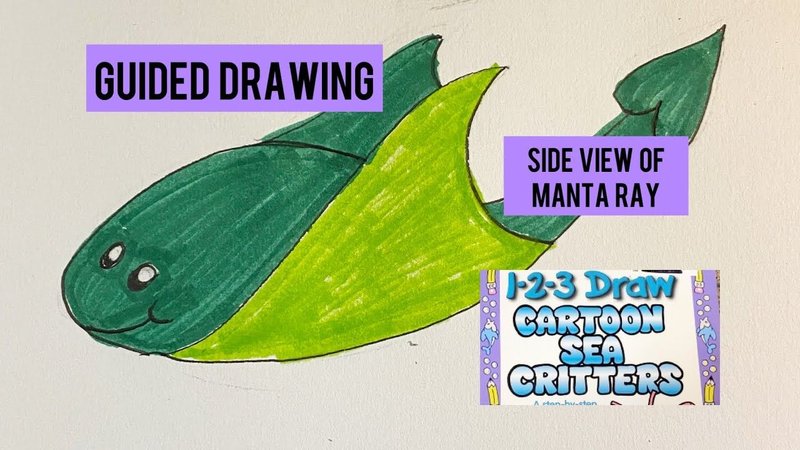
Manta rays are fascinating creatures with a unique way of life. They’re often found in warm waters, where they effortlessly dance through the ocean, feeding on tiny plankton. But there’s so much more to them than meets the eye. Their ability to navigate vast distances and communicate with each other is a skill set honed over millions of years. So, let’s dive into how these incredible animals find their way around the ocean and share information with one another!
The Manta Ray’s Sense of Environment
To understand how manta rays navigate, we first need to look at their sensory abilities. Manta rays possess highly developed senses that allow them to perceive their surroundings effectively. One of the main tools in their toolkit is their acute sense of vision. These creatures have large, forward-facing eyes that help them see well in dimly lit waters. This means they can spot food and avoid predators, even when visibility isn’t great.
Another vital sense for manta rays is their ability to detect electrical fields. They have specialized receptors called ampullae of Lorenzini. These allow them to sense the electric fields created by other marine life. Imagine being able to “feel” the presence of nearby fish or even prey from a distance! This extraordinary capability helps manta rays locate food sources and navigate through various ocean environments.
In addition to these senses, manta rays can also rely on environmental cues, such as ocean currents and water temperature. They often follow these currents to migrate over long distances, like travelers navigating using the stars. It’s a blend of instinct and environmental awareness that helps them thrive in their expansive habitat.
Navigating the Ocean: How Manta Rays Find Their Way
Manta rays are known for their migratory behavior, which can take them across hundreds of miles in search of food or suitable breeding grounds. You might be curious about how they know where to go. Well, it all starts with a mix of instinctive behavior and learned experiences.
Young manta rays often latch onto the movements of older individuals. This mentorship helps them understand migratory patterns. Over time, they learn the best locations for feeding or breeding, which becomes part of their navigational toolkit. Think of it like a road trip—sometimes, you follow your GPS, but other times, you learn the best shortcuts from friends.
Interestingly, manta rays have been observed taking the same routes repeatedly. This consistency in pathways suggests that they may have a form of spatial memory, allowing them to remember the areas where they found abundant food or safety. So, whether it’s following currents or recalling past experiences, manta rays have a well-rounded approach to navigating their underwater world.
Communication Among Manta Rays
You might think of communication as something that only happens with sounds or words, but manta rays communicate in more subtle ways. Since sound doesn’t travel well underwater, they rely on body language and behavior to send messages to one another. For instance, during mating rituals, male manta rays perform a series of acrobatic flips and turns to attract females. This display can be seen as their way of “talking” through movement.
Another fascinating aspect of their communication is the use of color and pattern changes. Manta rays can alter the brightness and color of their skin, which may indicate their mood or intentions. Imagine if you could change your shirt color based on how you felt! This ability not only helps them communicate with potential mates but also signals to other rays about their presence, which can be crucial for social dynamics.
Moreover, research has shown that manta rays can differentiate between individuals, suggesting they may also form social bonds. They are often spotted swimming in groups, and their interactions can provide insight into their social structures. This bond is essential, especially for creatures that rely on one another in navigating and feeding.
The Role of Echolocation in Navigation
While manta rays primarily depend on their keen eyesight and electroreception for navigation, echolocation is a fascinating concept to consider. Although not all rays use echolocation, some related species, like sharks, do. Manta rays have highly sensitive hearing, allowing them to detect sounds that might help them navigate in murky waters.
Imagine navigating through a dark room with your eyes closed; you’d likely start relying on sounds to help you get around. Manta rays use a similar concept when encountering poor visibility or during night swimming. They can sense the vibrations of nearby movements, allowing them to adjust their path and keep safe from predators.
This combination of visual acuity and sensitivity to sound vibrations helps manta rays maintain their course, even in less-than-ideal conditions. While they may not echolocate in the traditional sense, their ability to adapt to their environment is a testament to their evolutionary success.
The Importance of Manta Ray Migration Patterns
Migration is a crucial aspect of a manta ray’s life. These large creatures often travel long distances to find food and suitable breeding grounds. Understanding their migration patterns is vital for scientists and conservationists. Tracking these movements provides insights into their behaviors and habitats, which can help protect them against threats like climate change or overfishing.
Manta rays typically migrate towards areas with abundant plankton, which serves as their primary food source. They often follow oceanic currents and can be seen gathering in locations known as cleaning stations, where smaller fish help remove parasites. These “rest stops” are essential for their health and provide a glimpse into their social behavior.
Understanding these migration routes is essential for marine conservation efforts. By protecting key feeding and breeding grounds, we can help ensure the survival of these magnificent creatures. Their long-distance travels also indicate the health of marine ecosystems, making their conservation beneficial for other species as well.
How Human Actions Impact Manta Rays
Unfortunately, our actions can significantly impact the lives of manta rays. Overfishing, pollution, and climate change are just a few challenges they face. For instance, when the oceans heat up due to climate change, it can affect their food supply. Additionally, pollution often leads to the decline of plankton populations, which directly impacts manta ray feeding patterns.
Humans also pose a threat through fishing practices. Manta rays can become accidentally caught in nets, leading to population declines. Illegal fishing methods, like using explosives or toxic substances, further damage the delicate balance of marine ecosystems, pushing manta rays into shrinking habitats.
It’s crucial for us to understand how our choices impact these creatures. By promoting sustainable fishing practices and reducing plastic waste, we can help create a healthier environment for manta rays and the ocean as a whole. Conservation efforts, like creating marine protected areas, can also make a significant difference in helping these majestic beings thrive.
Understanding how manta rays navigate and communicate reveals a world of complexity beneath the ocean’s surface. These gentle giants rely on their senses, social interactions, and migratory behaviors to thrive in their environments. By appreciating their unique abilities, we gain insight into the broader health of our oceans.
As we continue to learn more about manta rays, it’s vital to remember the impact we have on their lives. Protecting their habitats and promoting conservation can ensure that future generations enjoy the beauty of these incredible creatures. So the next time you think about the ocean, remember the manta rays and the intricate dance of navigation and communication that takes place beneath the waves.

